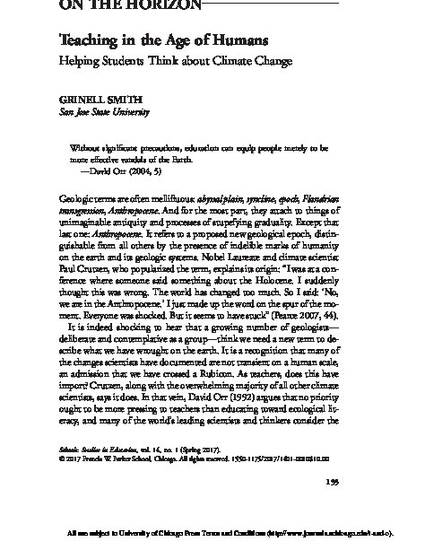
Article
Teaching in the Age of Humans Helping Students Think about Climate Change.
Schools: Studies in Education
(2017)
Abstract
To convey the magnitude and rapidity of current climate change and the severity of predictions for the next century, I present essential climate science information using four key sets of data and contextualize that information with personal anecdotes. I then consider the reasons for the large gap between the scientific consensus about anthropogenic climate change and public perceptions of that consensus. With several known challenges to climate change education in mind, I offer four recommendations for teachers that map relevant social psychology to pedagogy: (1) establish a learning community that works to disrupt in-group favoritism and reduce attribution bias; (2) help students identify a set of superordinate goals to reduce intergroup conflict; (3) structure discourse toward deliberation rather than dispute to minimize the effects of loss aversion and confirmation bias; and (4) help students concretize their beliefs by asking them to think in terms of actual people, places, and events.
Keywords
- Teaching menthods,
- students,
- climatic changes-study and teaching
Disciplines
Publication Date
2017
DOI
10.1086/691257
Publisher Statement
This article was published in Schools: Studies in Education, volume 14, issue 1, by the University of Chicago Press. It is also available at this link. © 2017 by Francis W. Parker School, Chicago. All rights reserved.
SJSU Users: use the following link to login and access the article via SJSU databases.
Citation Information
Grinell Smith. "Teaching in the Age of Humans Helping Students Think about Climate Change." Schools: Studies in Education Vol. 14 Iss. 1 (2017) p. 155 - 170 ISSN: 1550-1175 Available at: http://works.bepress.com/grinell_smith/14/
